Art at the service of the encounter with God
In service for the Custody of the Holy Land since 2013, Fra Rodrigo Machado Soares is the master of ceremonies and deputy director of the Department of Cultural Heritage. His two functions, which could seem very different, bring him face to face every day with the cultural heritage of the Franciscans of the Holy Land for the same purpose. We meet him today to discover what his little-known work consists of, and to better understand the specificity of the Terra Sancta Museum and what is hidden behind the definition of “living objects.”
Rodrigo, what does the function of master of ceremonies consist of?
The function of master of ceremonies consists of guiding the ritual and the celebrations, making sure that they are carried out as best and as normally as possible, complying with the rules. However, behind all this, the main task is to help prayer. A dignified and prepared celebration means that the whole gathering can experience and enjoy that moment of celebration.
Can we say that in a certain way the master of ceremonies acts as an intermediary?
Well, if this language can be used, we should say that it is about mediating between the actors (the celebrants) and the book, so that the book, through the actors, can be read. This way the actors of the celebration can follow what they have to follow at the right time. The liturgy has to be beautiful because it aims at the deep accomplishment of the encounter with God. The liturgy is an encounter between man and God and at this encounter, where the celebration of the mystery takes place, if there is someone who does not know what to do, there is chaos.
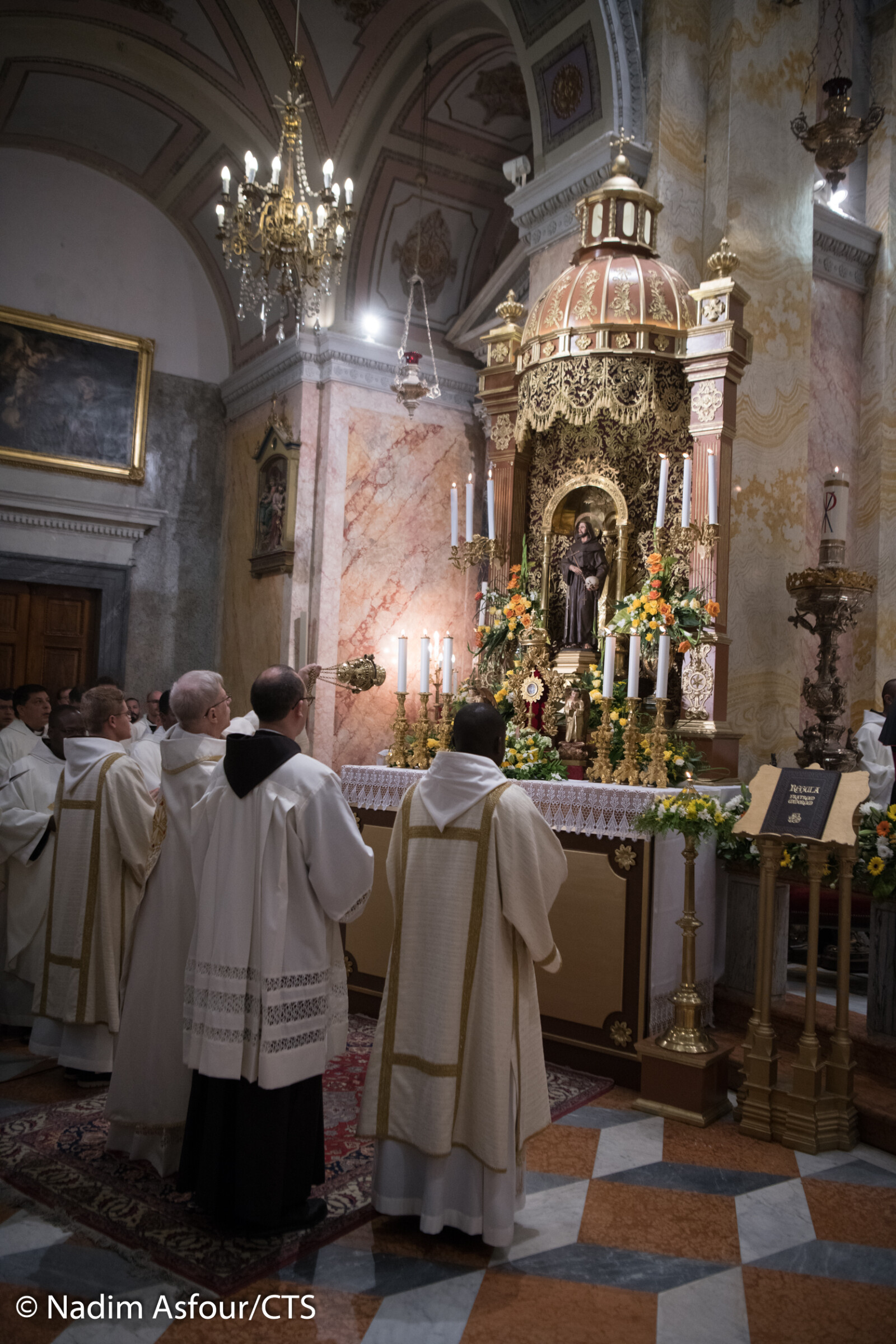
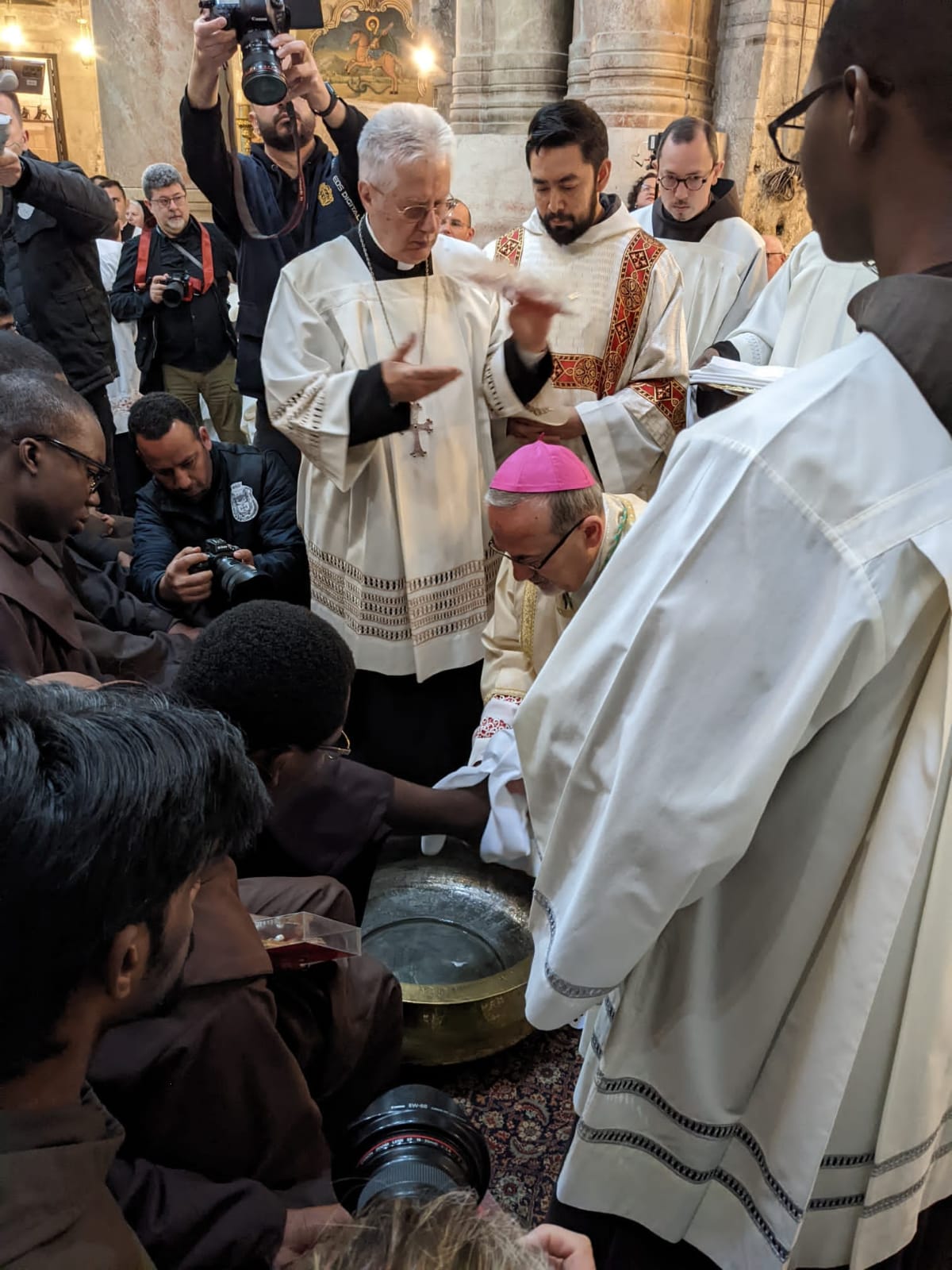
How is a celebration prepared? What steps have to be taken?
Clearly, the role of the master of ceremonies is not activated only from the start of the celebration at the Prosit. First there is the choice of all the elements that make up the celebration, in collaboration with the sacristans (it is team work, the master of ceremonies never works alone). This choice is linked to the mystery celebrated and to the tone of the celebration. A penitential celebration is not the same thing as a solemnity like Easter. It also has to be linked to the place where it is celebrated, to have a certain harmony with the building and with the context.
Here, we have to note the particularity of the Holy Places. Being the master of ceremonies in the Holy Land is slightly different from being the master of ceremonies in all other parts of the world, because there are particularities that are present only here, in the liturgy of the Holy Land. For example, the master of ceremonies here has to have greater knowledge of the status quo, because he has to know, in time and space, where and how it is possible to move (in the shrine) and what can and cannot be done.
In this way the first step is to check all the elements and actors necessary for the celebration and contact them: the place, the list of the service (who the celebrants are, how many of them there are), the songs and then the organist (because the music has to guide everyone, in a certain way). After all the actors begin to work, there comes the preparation of the place and the choice of the style according to the degree of the celebration and the tone. Here the material elements are chosen in such a way that everything forms a whole: if the liturgical colour is red, the Venetian frontal can be used, for example, with golden candles because the frontal is embroidered in gold; if the frontal is silver then silver candles will be used. Some objects however, are linked to a celebration by tradition, such as the tabernacle of Peru which was made and donated for the celebration of Holy Thursday.
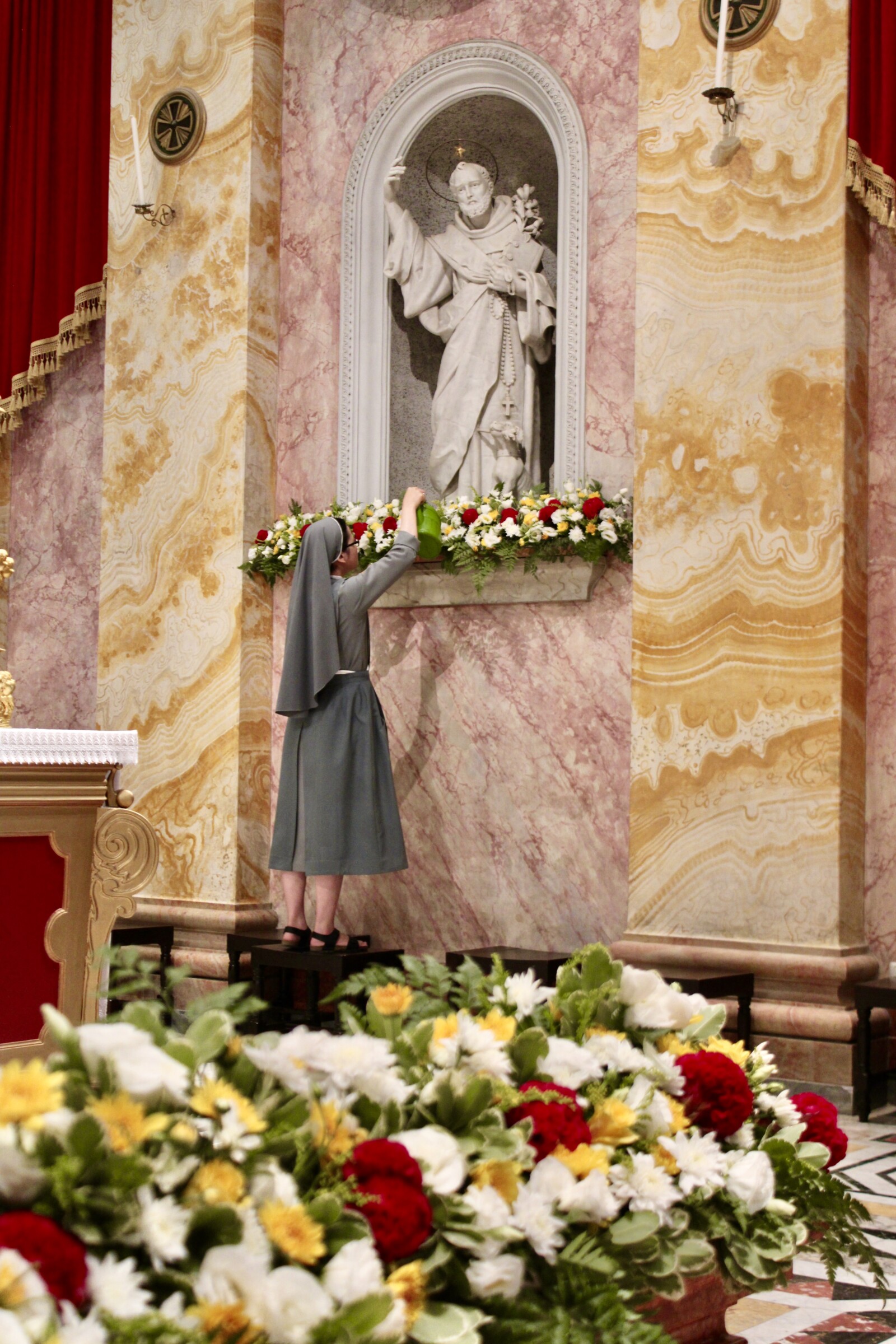
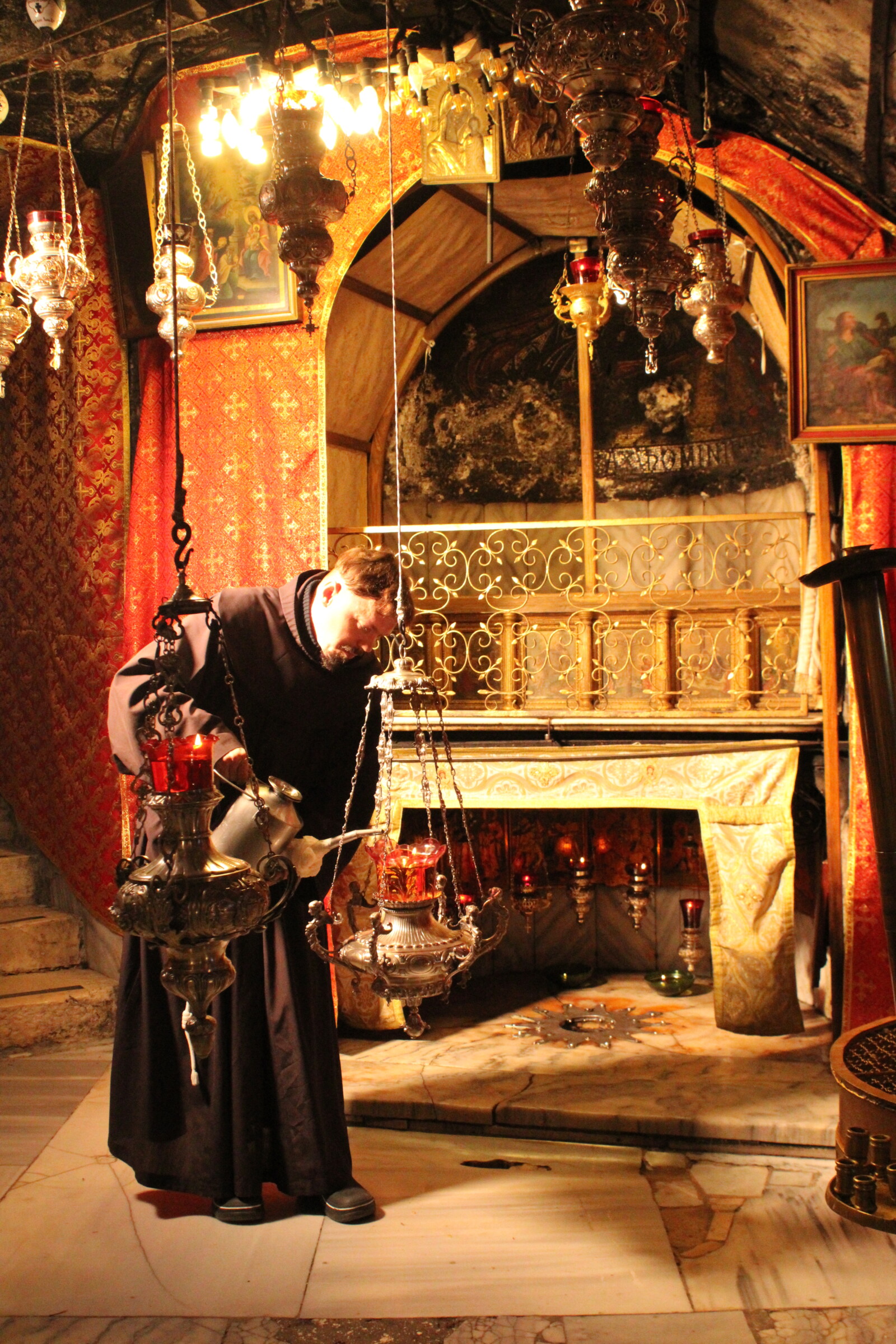
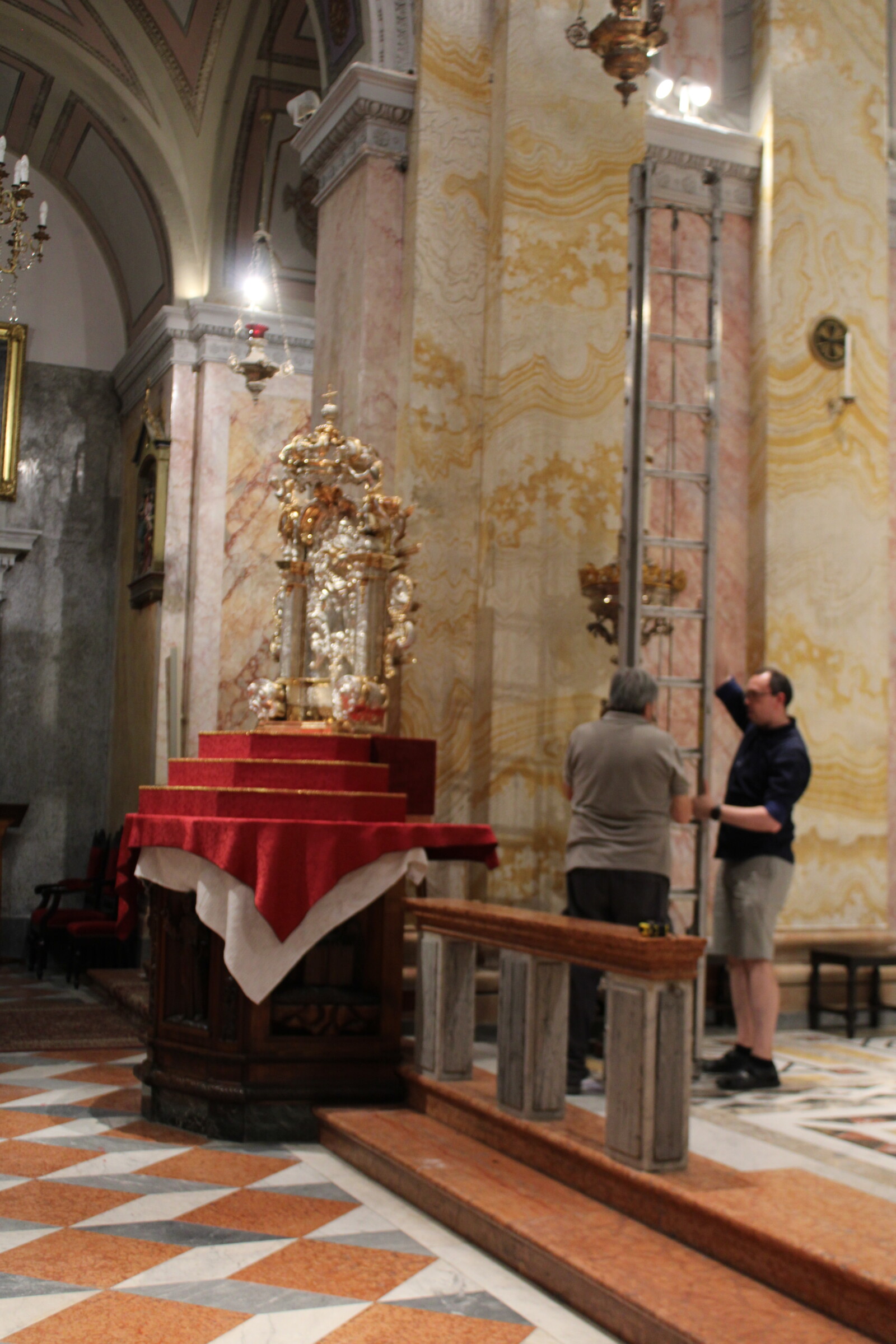
Then, when the flowers, the altars, ornaments etc. are ready, the rehearsal begins with the deacons, and afterwards, the whole service. Lastly, one hour before the celebration, all the elements are laid out, the choir is ready and with my collaborators I make the last checks, choosing the language used for the liturgy, the people who will do the readings and who will make the offertory.
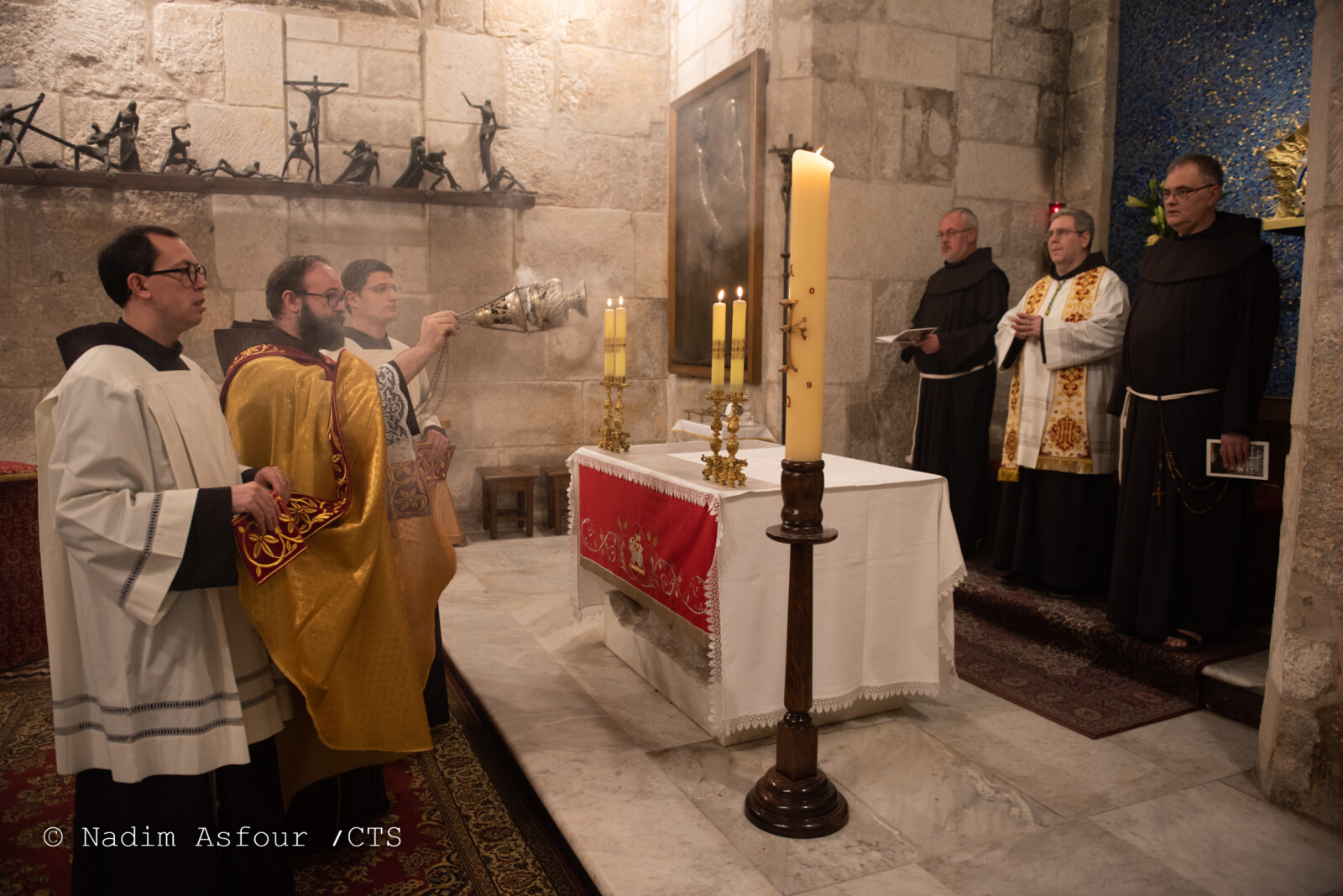
In general, for St Saviour’s church, two days of preparation are necessary, plus the day of the celebration itself and another to take down everything and put it all away. In the shrines, however it is slightly different because we cannot use the places when we want. For example, in the Holy Sepulchre, if the mass is in front of the tomb, the rehearsals cannot be done the day before, blocking all the pilgrims who come to pray there. So we arrive two hours earlier and the rehearsal is done on the same day. It is a lot of work because it is made up of small details that have to be put together. It is like a big mosaic where unity is very important because a movement that is not done well disturbs another and begins to produce small holes that in the end become a large hole. The liturgy has to be brief, simple and smooth, but it also has to have a rhythm and when this rhythm is lost it is a problem.
Let’s talk now a little about the museum of the Custody. You are also deputy director of Cultural Affairs. How do you see the link between these two activities?
In a certain way it completes it because our museum is not a dead museum, it is a museum of living objects that still preserve their liturgical function. They are first and foremost objects of worship that then also become works of art. This creates a very interesting link between my two activities because it is a way of getting to know our heritage used in the liturgy, learning more about their history and their meaning.
So how do you see these objects? And what do you think of all the objects that today are in the museums and are no longer used?
Now, I can say that I understand the artistic interest in these objects more than before, but I will never be able to stop seeing them for the purpose they were created for, because it is stronger than the artistic value. The beauty of an object is not an end in itself but is to show something deeper than what the object holds, what is being celebrated and what it illustrates. The finest and most ornate and riches chalice decorated with precious stones is so because it holds the most precious thing that there can be, that is, the blood of Christ. Why do the vestments that the celebrants wear have to be beautiful? Not because it is a fashion show but to show the presence of Christ.
I complain a little about the lack of respect for the nature of the object. I understand that at times a chalice is no longer in the condition to be used without causing damage and I also understand that for a museum that has only three chalices, taking one away for a mass and leaving the showcase half-empty is complicated. However, I think that if an element has the conditions to be used for specific occasions (I’m not saying every day) it should be used and it would be nice because by doing so we respect its nature.
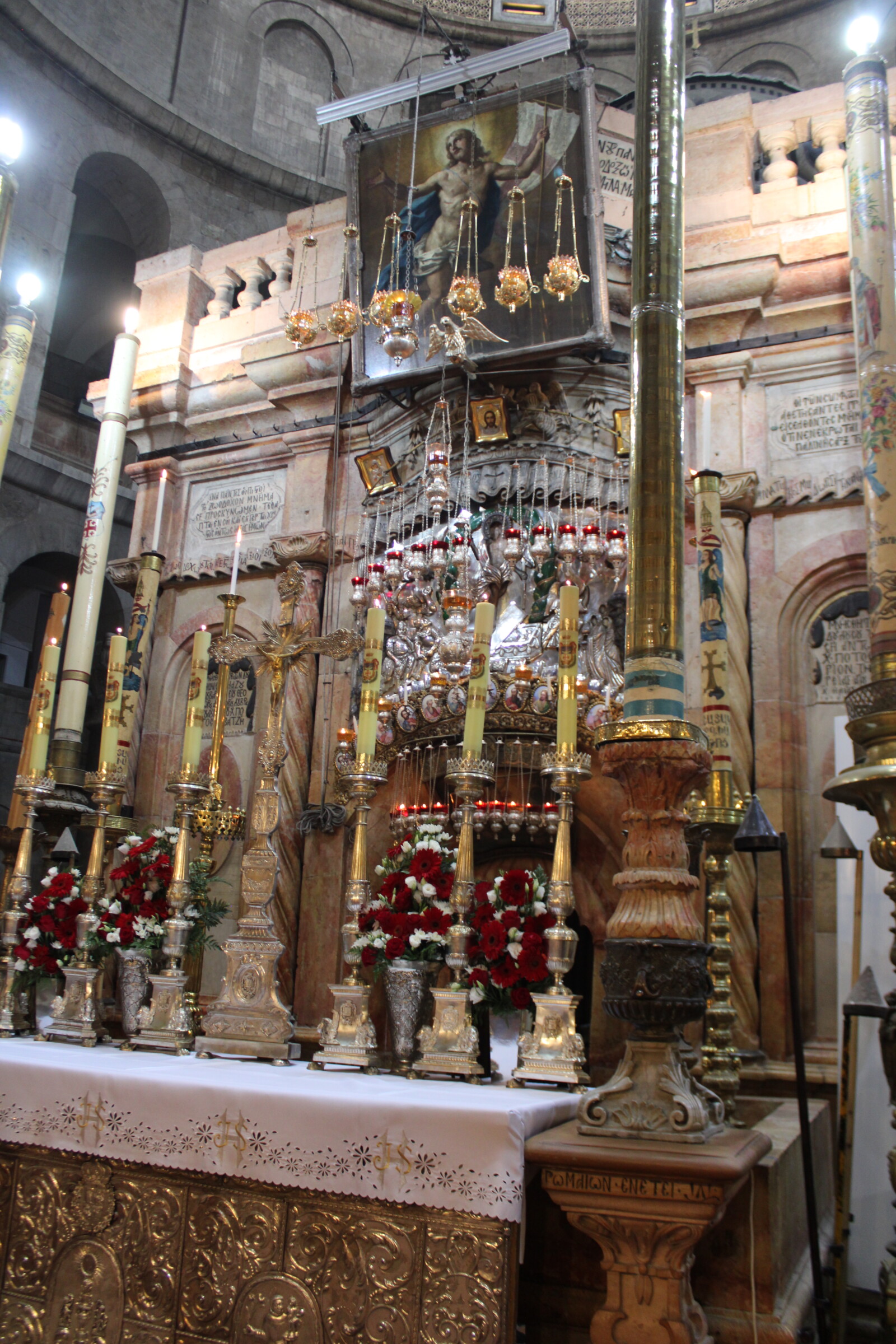
Don’t you think though that this new function of the objects in museums is interesting as well, in the sense that when they are on display, they can talk about Christian history and convey messages to a public today who don’t go into churches?
Of course, that’s obvious and our museum as well is conceived to be a place of encounter and dialogue and above all to allow the Christian world to be rediscovered. Today, many symbols and signs that were part of conventional knowledge no longer are, because the culture has changed. So all this has to be conveyed and this is also the task of our museum. Today more than ever, people are seeking an encounter with God and going into a museum and seeing these objects can allow them to dialogue with something deeper. There I perhaps ought to use the principle of Augustinian aesthetics which is the itinerary of beauty: I imagine that our museum will be a great itinerary, a journey, a path of beauty of the exterior of the objects we will see, that will touch our interior allowing it to be raised to something more sublime, which is for whom and to whom it has been destined.



